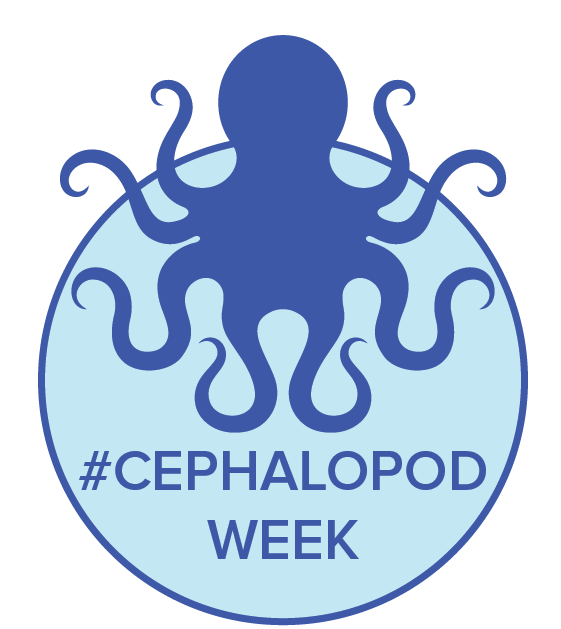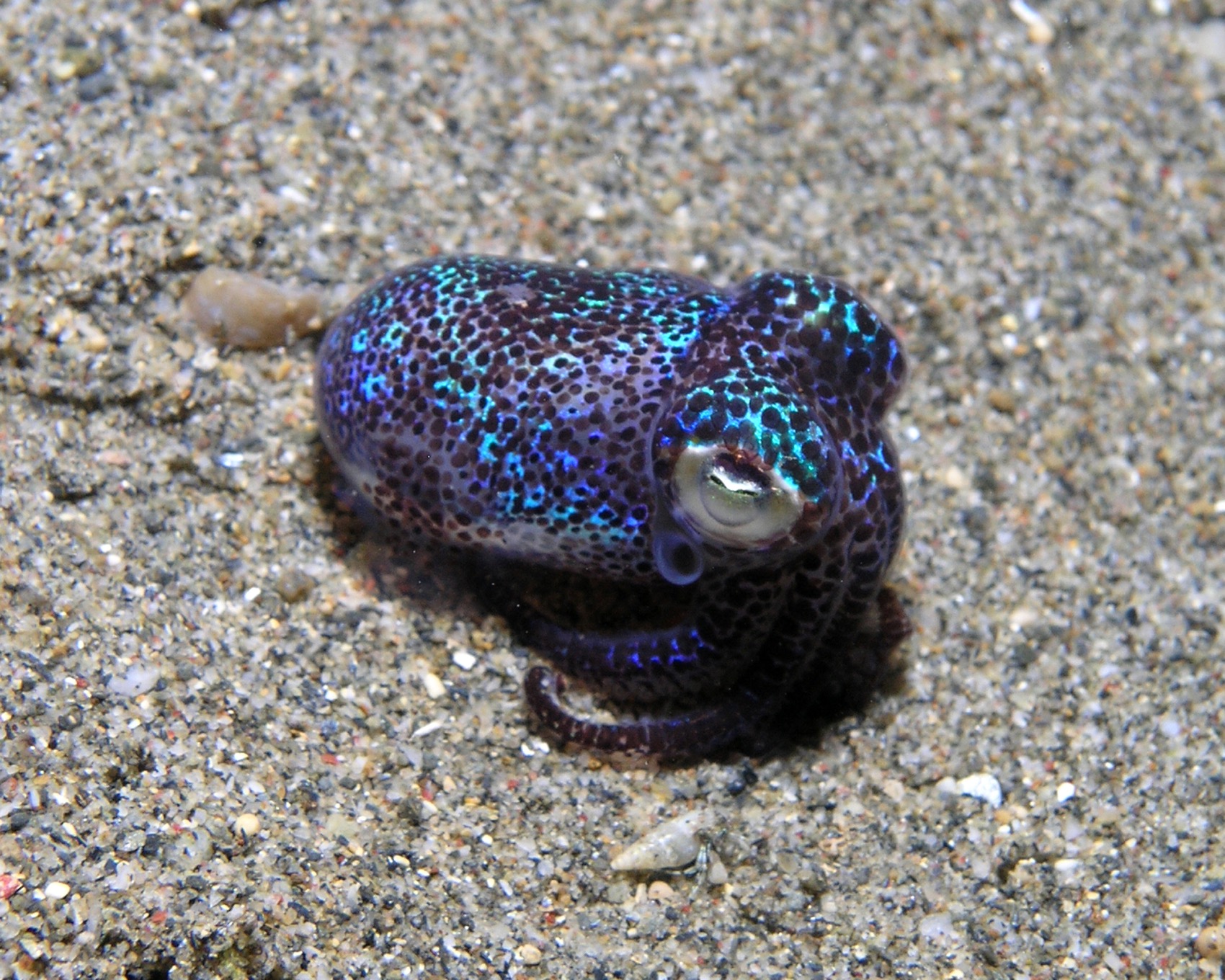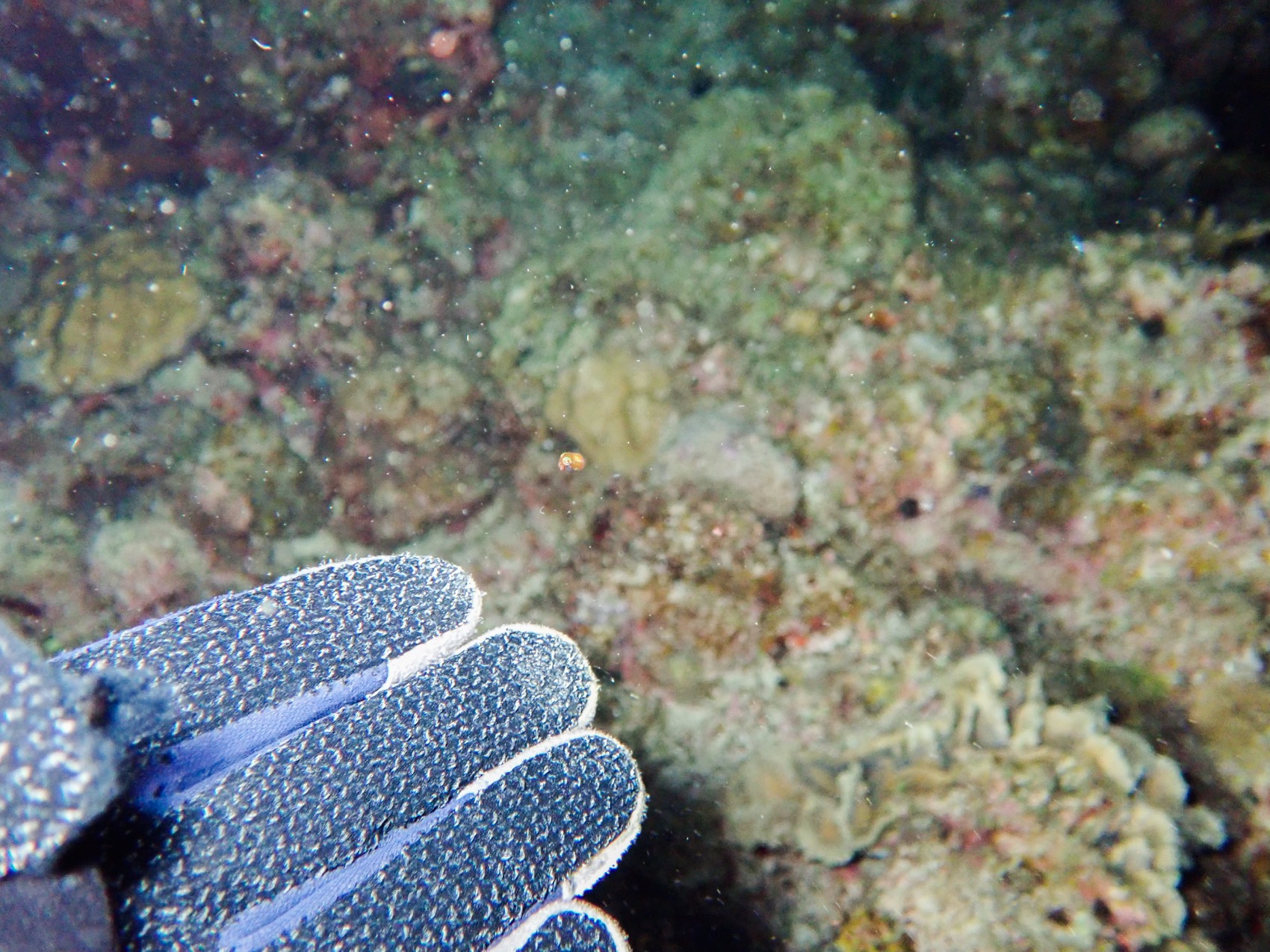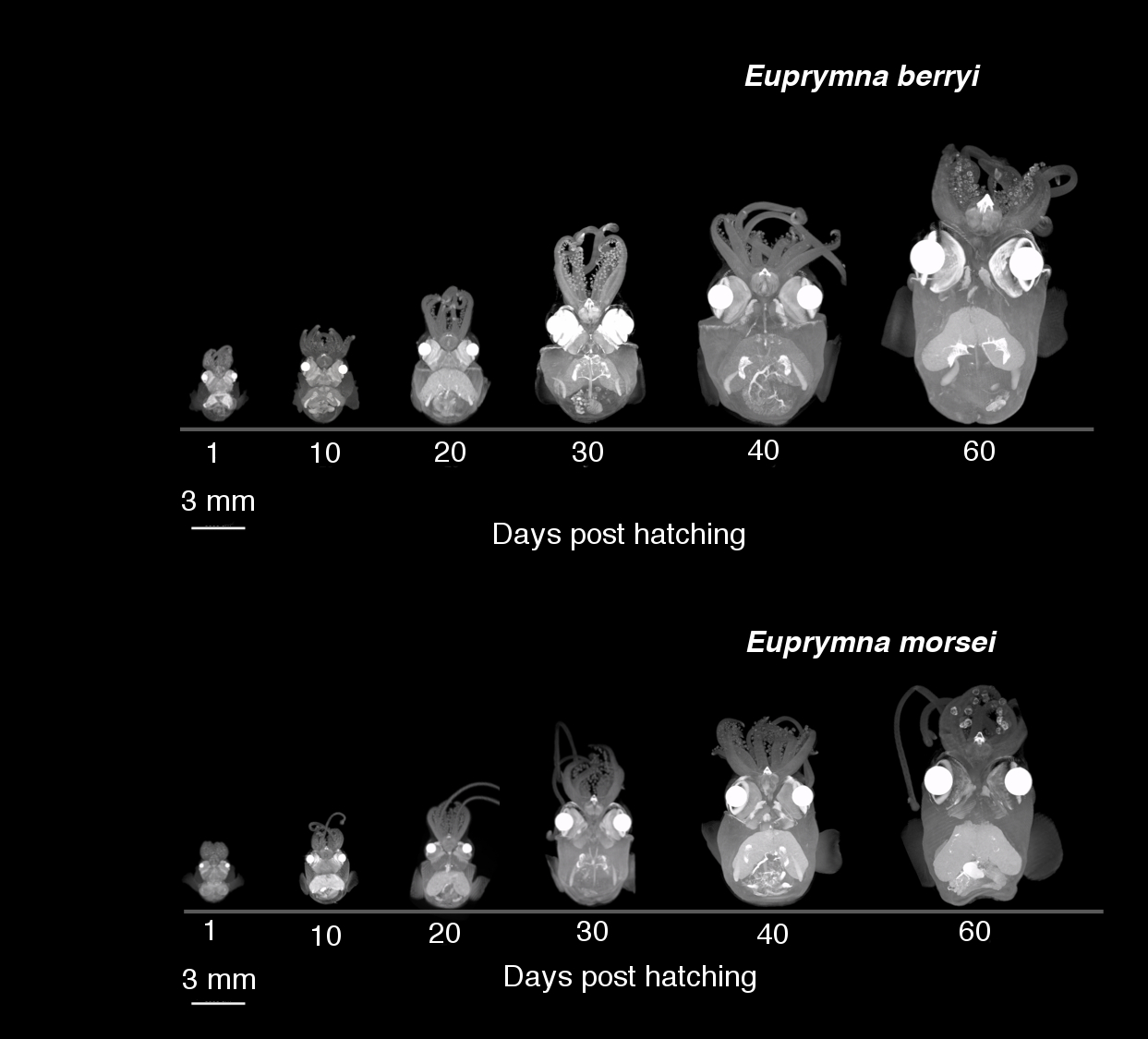Swimming Down The Runway: Finding A Model Species For Cephalopods
Want to learn more about cephalopods? Start by learning about bobtail squids.
 You might think the bobtail squid would easily fall under #TeamCute. But this 3D-scanned image of the cephalopod hatchling makes the usually adorable bobtail squid look a little more demonic than cuddly. For the person who scanned the creatures, terrified isn’t a word he’d use.
You might think the bobtail squid would easily fall under #TeamCute. But this 3D-scanned image of the cephalopod hatchling makes the usually adorable bobtail squid look a little more demonic than cuddly. For the person who scanned the creatures, terrified isn’t a word he’d use.
“Every time I look at these 3D images, I’m just so excited,” says Jeff Jolly, the cephalopod facility manager for the Molecular Genetics Unit led by professor Daniel Rokhsar at the Okinawa Institute of Science and Technology. “I’m like, what can I look at this time? They’re just cool little creatures.”
The 3D models and images of the bobtail squid that the lab is using is part of an effort to find a model species for cephalopods. A model species is a specific organism that helps researchers understand larger biological processes and the evolution of a related group of creatures. Jolly and the team take a detailed view of these squid to get a better idea of how to raise them in the lab for study.

A bobtail squid. Credit: Nick Hobgood via Wikimedia Commons
“[You use] it as a model to understand [the] whole thing,” says Jolly. “When you’re studying this line of bobtail squids, you can extrapolate what you’ve learned from that to other cephalopods. Let’s say you find something that is really important with these bobtail squids. You can try and apply it and see if that works its way up to octopuses.”
For over a century, certain token animals have been used again and again as model species in the lab. You’ve probably seen news articles saying that a new cancer treatment had success in mice. Or you may have seen a similar headline on a genetic study using fruit flies instead. These are species that are small, low-maintenance, and reproduce quickly.
“Generally in science, a model species is something that requires little effort,” says Jolly. “Scientists generally don’t have time to really care over things. So, [they] are constantly looking for animals or plants that have certain features that make them advantageous to study.”
Once scientists settle on a model species, they can use them to learn more about related species (mice studies can guide human trials, early experiments on fruit flies help scientists understand that chromosomes carry genetic information among all animals, etc). For cephalopods, having a model species is important because these marine invertebrates are so unique from other creatures on Earth. “They’re definitely not aliens, but they’re the closest thing you can get to aliens,” says Jolly. “They evolved independently than vertebrates. They have camera-like eyes. They have all sorts of weird stuff.”
But for scientists trying to study the complex world of cephalopod biology and genetics, the story’s been a little different. “There hasn’t really been a model species for cephalopods, if you want to study how unique they are,” says Jolly. That comes down to a few reasons, he explains.
“Cephalopods are pretty tricky to keep,” he says.
They eat a lot and prefer live food. Additionally, they can get quite large, commonly growing up to a few feet in size—not ideal if you’re trying to keep many of them in a tank in the lab. “Also the ink makes the water dirty and it’s a nightmare if you’re trying to culture them,” he says.
But Jolly says researchers think they hit the jackpot for a cephalopod model species in bobtail squids. The creature ticks off all the boxes. They don’t get longer than about two inches. Their egg clutches, which they lay about once a week, can contain anywhere between 150 to 400 eggs. So far, the researchers have had the most success with the bobtail squid species Euprymna berryi, and they’ve sequenced its genome.

“You'll see them on a night dive. You'll spot them and they'll put their arms up and make this little aggressive pose,” says Jolly. Credit: Jeff Jolly
More and more labs are starting to use the bobtail squid as a model species, but researchers are still fine-tuning how to raise the bobtail squid. This is where Jolly comes in, who helps capture and raise the squid. “I want to try and figure out all of the baseline stuff that you’d like to know,” he says. “What can I expect if I’ve got these guys in my laboratory?”
But since we’re talking about a lab environment, Jolly and his coworker Yuko Hasegawa, an imaging specialist, require a more in depth level of detail. And for that, he needs a micro-CT scanner to take a look inside.
The micro-CT scanner takes highly detailed 3D scans of the bobtail squid, which gives an idea of what Jolly and other researchers can expect from the squid at any given age. “You can monitor the growth of the individual organs. You can monitor the growth of its eyes, or its visual system, or its brain, and all this crazy stuff like when it becomes sexually mature,” he says.

And unlike trying to view a cumbersome, 2D image of squid under a microscope, the 3D models allow Jolly the flexibility of manipulation, too. “You can spin it. You can zoom in to certain parts. You can segment each arm individually or the brain. It’s just so nice.”
Next, Jolly would like to compile all the information they’ve learned into a public data set. “We’re trying to develop this model system. So, my goal for this is to create some kind of app that people can go on to.” From there, he envisions wide-ranging applications, from teaching anatomy of squid in classrooms to serving as a reference for scientists who want to care for their own.
“What I imagine is people who have experience using mice, flies, zebrafish, and such, might consider bobtails as a useful tool to study some fundamental questions. We are ultimately working to lower the barrier to enter into cephalopod research,” he says.
Researchers could also take the data sets and make new biological and genetic discoveries. For a field that’s been understudied compared to vertebrates, this information could be a huge help for that.
“How do the genes make a cephalopod a cephalopod?” Jolly says. “Understanding how they evolved to be so weird—I think that’s one of the coolest things you can use bobtail squids for, is understanding what makes a cephalopod.”
Special thanks to Shinya Komoto from the OIST Imaging Section, who helped gather important data for the 3D images.
With every donation of $8 (for every day of Cephalopod Week), you can sponsor a different illustrated cephalopod. The cephalopod badge along with your first name and city will be a part of our Sea of Supporters!
Dee Peterschmidt is a producer, host of the podcast Universe of Art, and composes music for Science Friday’s podcasts. Their D&D character is a clumsy bard named Chip Chap Chopman.